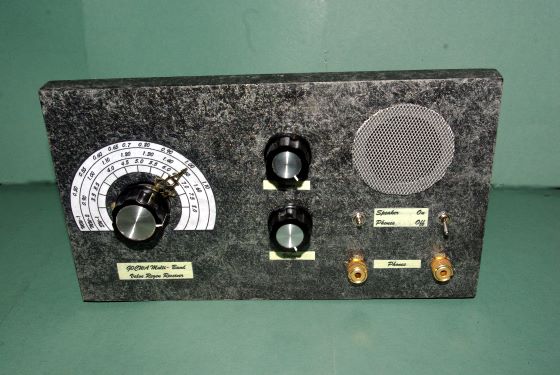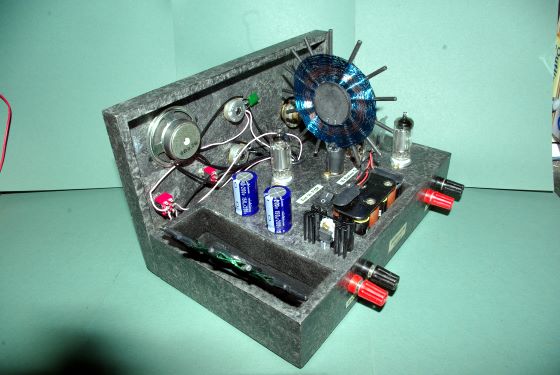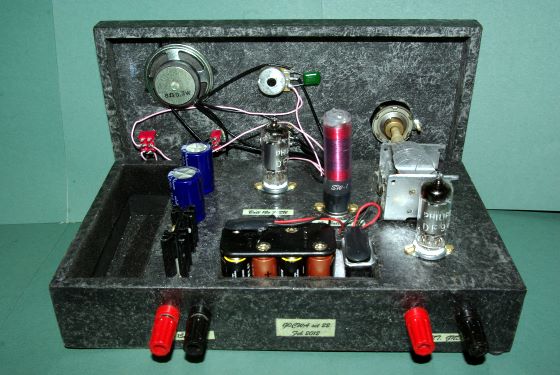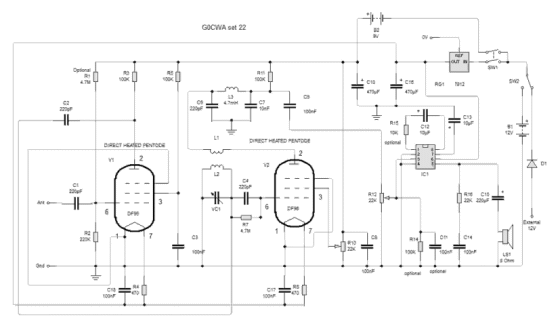2 Valve Regen Radio Set
Built by Nick Strong, G0CWA

Hi this is a brief write up of one of my ever growing number of homemade radios and radio related projects some of which are described in detail on makearadio.com. This particular set is based on a hybrid valve regen kit I built with several improvements of my own to enhance performance. The set consists of an RF amplifier (DF96) a regenerative detector amplifier (DF96) and an LM386 audio output stage.
I do not intend going into great detail as far as actually building the set is concerned as the broad detail is covered in the photographs, the layout is really personal preference.
The original set was a 12V powered version which although was an excellent little performer could have been better. I opted for only two improvements the first was to increase the valve HT voltage to 21V by using a simple 9V dry cell, the current drain is very low so it should last a long time. The major current drain is the valve heaters so I made the set capable of being run off a simple external power supply. I included a 7812 regulator to protect the valve heaters and LM386 audio amplifier from voltages greater than they could handle.
Increasing the valve HT increases their gain significantly and hence the radio performance and ease of obtaining regeneration.
The kit used pre-wound inductors, ideal for the beginner are not ideal in practice as their Q is quite low and so selectivity can suffer.
I opted to wind my own spider webs (actual value will depend on the variable capacitor used) with unusually a centre bifilar tuning coil the “anode take off” coil having between two and three times the number of turns to obtain reliable regeneration. The Q could be improved further by winding the tank coil with Litz wire. The short wave coil is wound in a similar way to the mystery crystal radio coil but the tank coil is the shorter of the two.
The set worked well up to around 8MHz pulling in several foreign stations with ease at 7.0MHz in the evening. Unfortunately the relatively high loading of the tank coils made reliable operation at higher frequencies difficult to achieve. But, considering the simplicity of the design I am more than happy with its performance. I can be contacted at n.strong@hotmail.co.uk with any questions I will try my best to answer quickly.
Remember home brew radio building should be fun enjoy playing, it’s only a hobby!
73 for now Nick G0CWA




